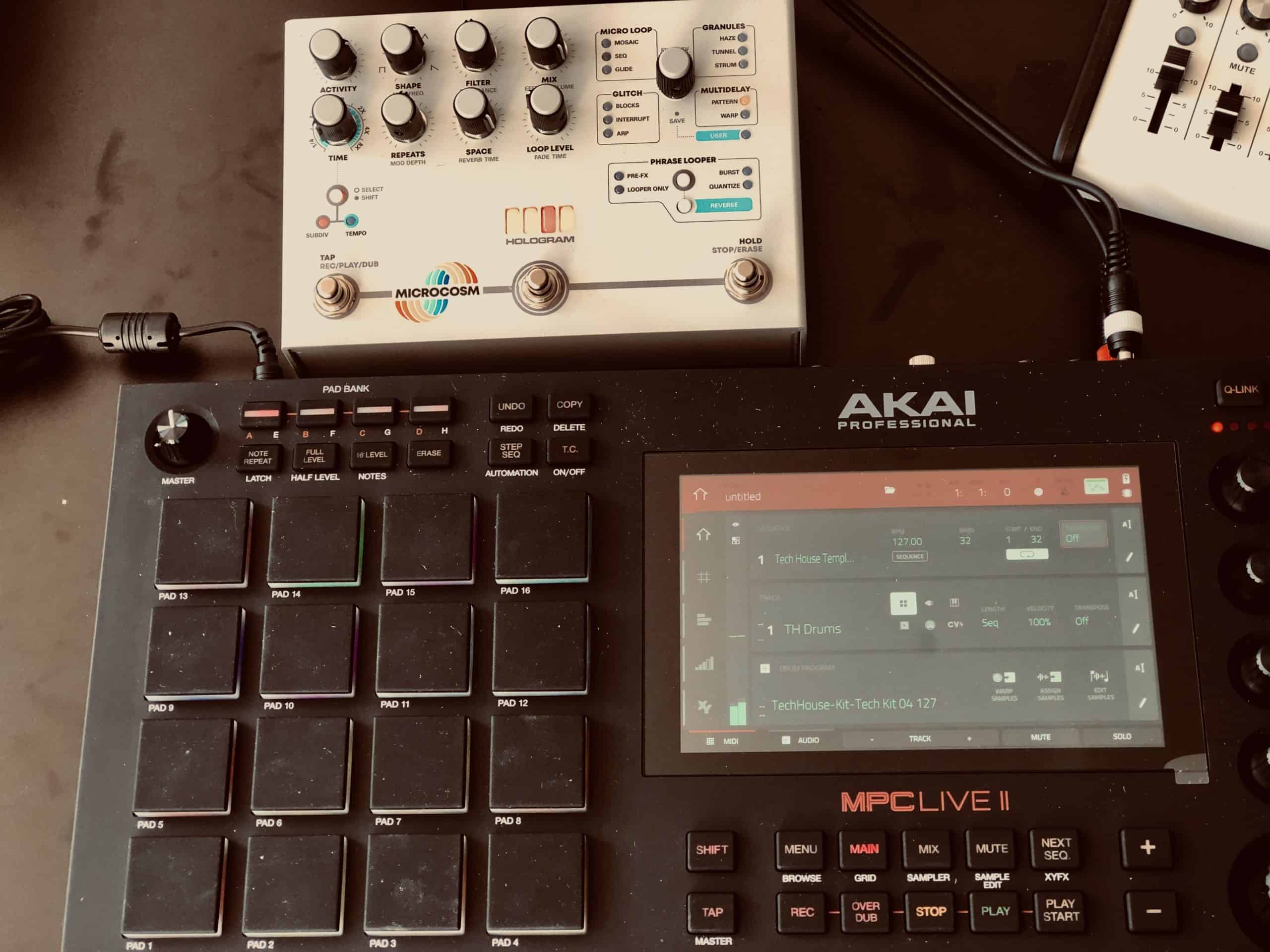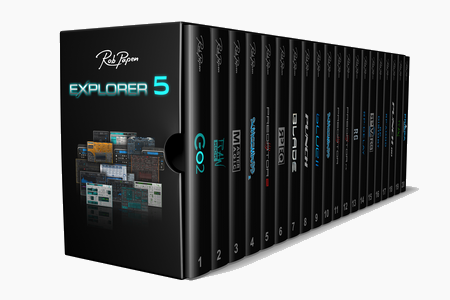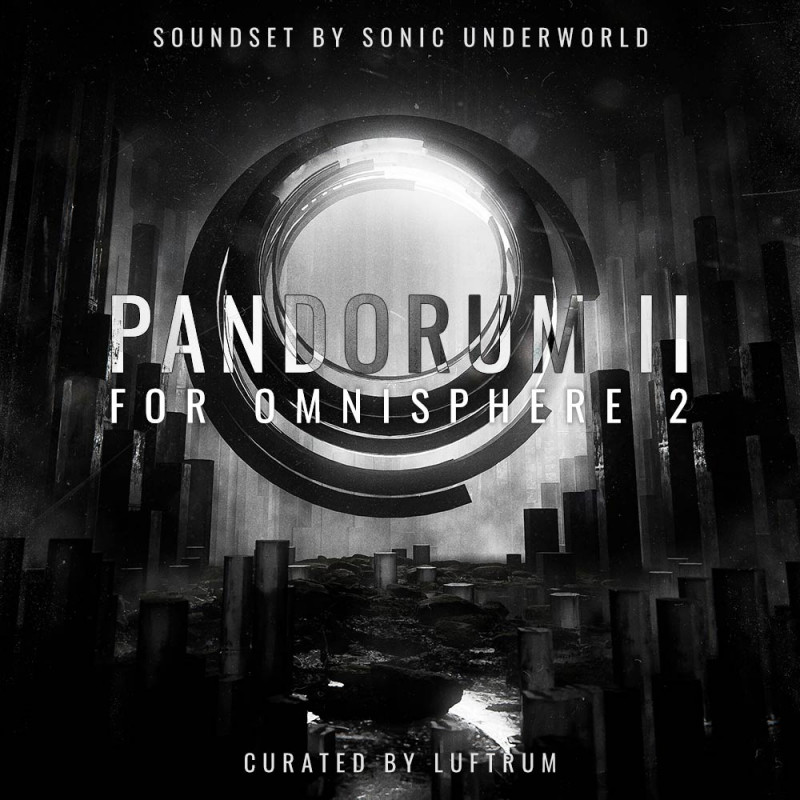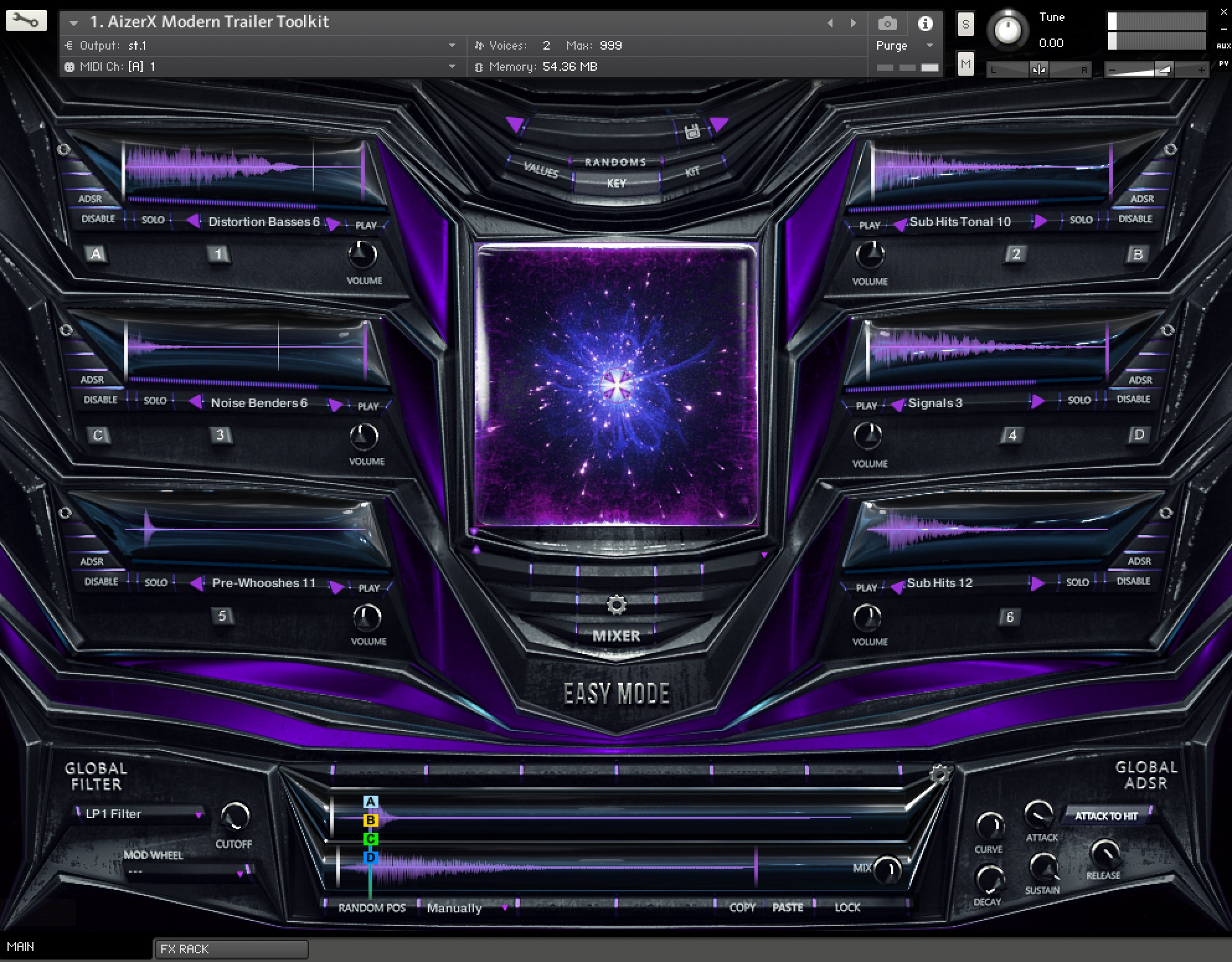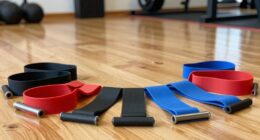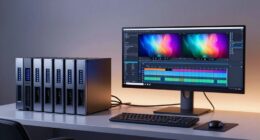Akai MPC Live II & Akai MPC One Review
We covered in our MPC Live and MPC X by Akai Pro Review (2019) the previously released MPC machines. Both devices did already show back in March 2019 how far the non-computer or DAWless machines have developed these days. With an MPC Live or X, it is exceptionally agile and easy to produce songs without using a computer-based DAW.
These days you have the choice of performing with many instruments to perform DAW-less. Devices like the MPC Live II, which come with an included battery, have the edge during the pandemic where you may want to meet friends outside instead of sitting near in a cafe or studio with them.

AKAI MPC Live II – The Perfect Mobile Studio
When I looked back in 2019, MPC Live was the smaller device used mobile to produce beats and works just fine in a studio or on a live stage. The new Akai MPC Live II replaces the now discontinued MPC Live. Akai’s current MPC lineup currently consists of three well-defined MPCs: the MPC One, the MPC Live II, and the MPC X.
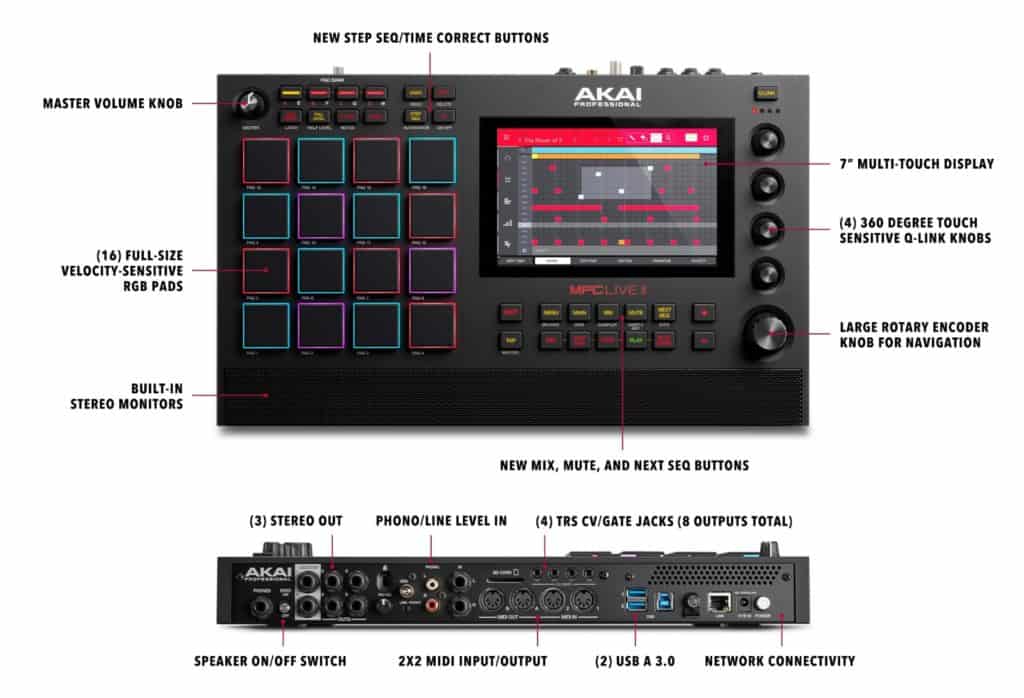
Soundbar Speaker
The noticeable update for the MPC Live II is the visible black built-in speaker. This speaker helps when you have no headphones with you when you are mobile. The included Live II’s speaker sounds good, giving average volume, a solid stereo image, and low-end ubiquity. The speakers are not an apparatus. They are ideal for an outside jam or with friends, and you all want to listen to the sound. You do not buy Live II for the speaker. You obtain it for the whole package.
MPC Live MK II Mobile Practice Machine – Convid-19
The new mobile music beat making machine help you always to improve your skills. Why not get better when you left your home and sit on the beach, or covid-19 conform somewhere on your outside. The new MPC Live II is your tool to work on your skillset everywhere. I did take the Live II with me when I did go to the lake, letting the dog have some fun in the water. It has driven to a location outside, taking the device out of my bag and get started. No setup is needed or an external power supply is required.
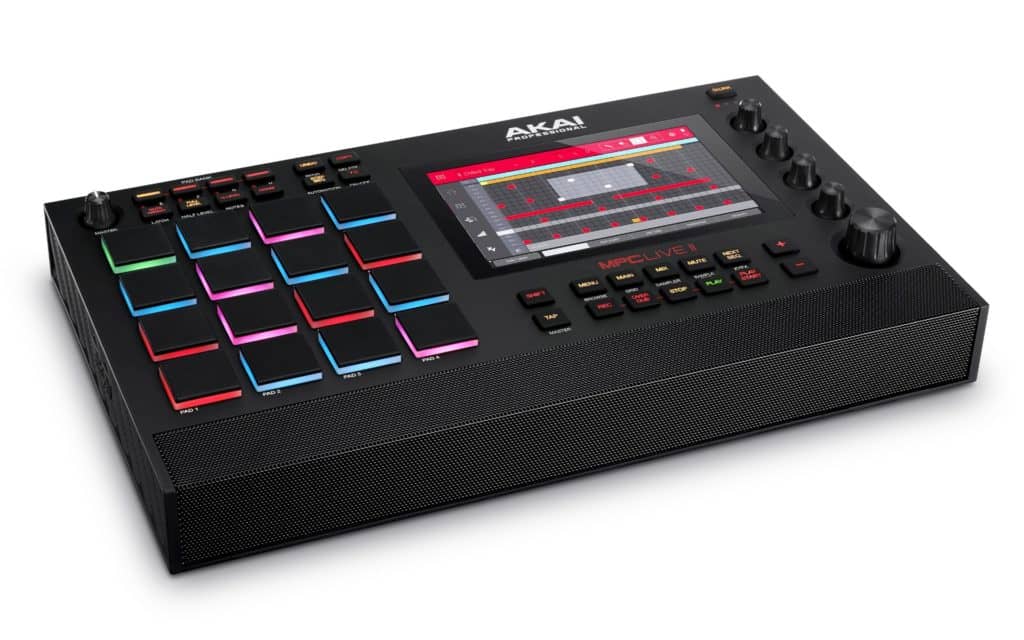
When you meet with your clients, probably somewhere outside, you can share the project and get feedback while meeting the client and not being forced to a studio environment where your client may not want to visit you right now. It is a modern instrument you can take anywhere and use for 4-5 hours.
Akai Live II is one of the top mobile music production and performance devices in the market. A comprehensive upgrade from the legacy MPC Live. Akai Live II is unmatched in versatility and the ability to inspire you on the go. The MPC Live II is a fabulous mobile & DAWless MPC sequencer/sampler. The Akai Live II is an excellent entrance into the MPC range to leverage the MPC workflow. The device offers a plethora of tactile controls, including 16 velocity-sensitive RGB pads, which allow for expressive performances and quick and intuitive beat-making. The Akai Live II also features a built-in lithium-ion battery, providing up to 5 hours of continuous use, making it perfect for on-the-go music production. Additionally, the device is compatible with a wide range of external gear, including MIDI controllers and the akg p120 specifications, offering endless possibilities for expanding your music production setup.
Ableton Integration
MPC Live II is Ableton Integration ready. WiFi (only available on the Live II) brings you tightly synced Ableton Link integration. ALS export makes sharing your projects super simple. Ableton Control means seamless clip launching and parameter control right from MPC Live II.
Ableton Live Control Features
- Matrix Tab – The Matrix tab displays an 8×8 section of Live’s Session View marked in the Live GUI by the colored session ring. Users have a complete overview of—and immediate access to—the scenes, clips, play status, recording status as well as control over playback, recording quantize functions, and scene/ clip management.
- Mixer Tab – The Mixer Tab provides instant access to Live’s key mixing functions, divided into three views for control of Levels, Main mixer parameters, and Sends. Using Force’s touch interface, control any slider/knob or bring up a full-screen editor for precise adjustments.
- Device Control Tab – The device tab controls the device on the current track at Ableton Live’s Blue Hand position, providing control and key visual feedback on Ableton Instruments and third-party plugins.
- Control Bar – At the top of the touch user interface, users can customize the Control Bar to display preset displays for Session, Arrangement, and Performance modes including BPM, Phase Nudge Down/Up, Metronome, Follow, Overdub, Automation Arm, and more.
Akai MPC One
The Akai MPC One is the most petite and most straightforward of the current MPC range. As it does not come with a battery – it is not a mobile performance system. You need to supply power while you use the device. Looking at a competition like the Maschine+, this device is half the price of a Machine+ and still substantially less than a Synthstrom’s Deluge and is coming with a different UI and the MPC software experience. The main difference to Akai Live II and missing an internal speaker is getting smaller pads and no battery & no Wi-Fi/Bluetooth support. You get more interface buttons with the One as its layout allows for more real estate. The extra buttons are helpful.
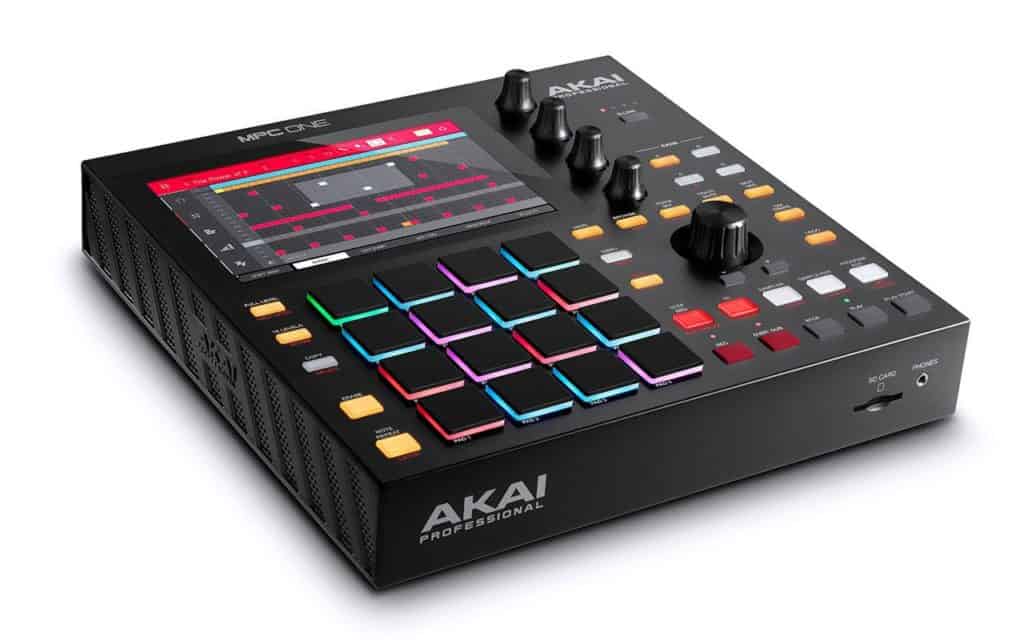
Eurorack and Semi-Modular Connectivity (MPC One & Live II)
Akai included CV/gate ports that you can use with your Eurorack, AE Modular, or Semi-Modular gear. No need to add midi to the CV device on top. The four ports need to be split by a cable in CV and gate. The Eurorack and Semi-Modular connectivity are essential when you want to use the device with your modular gear.


Touchscreen Akai MPC One & Live II
You can use the pad, knobs, and buttons, and in my experience, I used the touchscreen and pads at the same rate. The touchscreen helps when you want to make editing sequences, select notes/events, modify automation, enter parameter,s or enter a simple file name. The touchscreen is identical on both devices, and I used it a lot on the typical MPC workflow.


Rating: Five out of five stars
The MPC hardware Platform and the support software updates are getting better. With the new software updates, Akai is adding more helpful features to both devices. The Akai MPC One is a fantastic value for the price. The higher-priced Live II is your machine when you are mobile, especially in the current time where you want to meet outside. Both devices enable a whole new generation of beatmakers to produces beats and tracks.
Overall, with the MPC Live II, MPC One, and MPC X, you get your hands on a DAWless device without the need to run a computer while performing. The MPC lineup has you satisfied when it comes to sequencing your tracks and song, the fully grown sampler, recording, and editing abilities can be all used intuitively through the easy to use interface.

